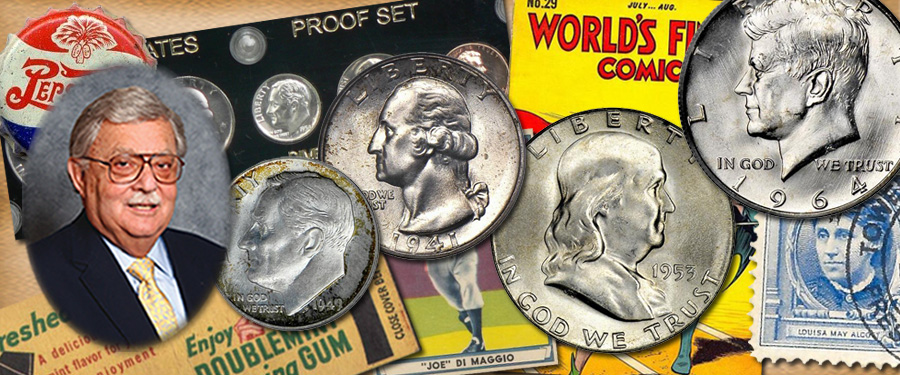
I now would like to approach the challenges encountered when building sets of Roosevelt dimes, Washington quarters and Franklin and Kennedy half dollars. Up to and including in 1964 these three denominations were made of 90% silver. As the price of silver began rising on the raw metal markets, the U.S. Mint (as well as mints throughout the world) realized that the value of the silver in each coin would be worth quite a bit more than the face value of the coin. Rather than lose money they stopped making them, and asked banks to remove them from circulation and surrender them back to the Mint. They then began striking coins of the “clad” composition that did not cost more than face value to make. (However, from 1965 to 1970 the half dollar was made of 40% silver.)
The price of silver kept rising and astute metal investors started buying the coins at above face value from the public. Banks bagged them in $1,000 sacks, and sold them at a profit to smelters to make into ingots (used for mercantile exchange). As there were fewer and fewer left in circulation, higher premiums were required to purchase each coin. At one point just before the end of 1980, the price had advanced from the initial double face value to as much as 20 times face value.
Responsibility for much of this could be attributed to the Hunt brothers of Texas who had speculated in the market and driven the price of silver to new heights. Their speculation became very extensive and they had margined their investments in the Stock Exchanges. One day in 1980 they ran short of money to cover their “bets” and the market in silver plummeted. This was a very expensive lesson to those who were speculating. Billions were lost, the markets were shocked and a near collapse of all commodities almost occurred.
This series of events added to the challenge of building complete collections of these 20th century denominations from circulation. It was my experience working in the hobby during this time that this discouraged many from continuing or beginning to collect coins from every day change. Many dates were almost impossible to find. Those who could not afford to collect via dealers or other outlets often found another hobby to pursue.
However, many people stuck with collecting these coins, and now these more “modern” denominations appeal to many numismatists and are an extremely important part of our hobby.





